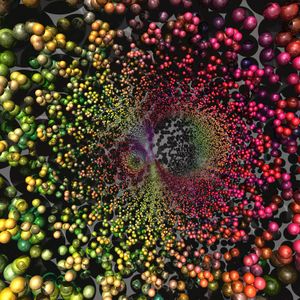Mar Malone didn’t start out planning to change the world. As a kid, he was curious about how our bodies know what to do why wounds heal, why some people recover from illness faster, and why some diseases seem unstoppable. That curiosity became personal when someone he loved faced a serious illness that modern medicine couldn’t fully solve.
“I realized the answer might not be in making something new,” he says. “The solution could already be inside us—just waiting to be awakened.”
The Science Behind His Mission
Malone’s research focuses on a fascinating idea from genetics and epigenetics: not all genes in our DNA are always “on.” Some lie dormant, or “silenced,” and this can affect health, aging, and disease. His work builds on decades of research showing that gene activity isn’t fixed—it can be influenced by signals, the chemical structure of DNA, and the cell’s environment.
- Signal Control (PI3K/mTOR): Cells have complex signaling networks that guide growth, repair, and survival. Evidence shows that carefully tuning these signals can prime cells to follow their DNA instructions without harming them (Fruman et al., Nat Rev Drug Discov, 2017).
- Chromatin Accessibility (SIN3/HDAC): Our DNA is wrapped in proteins called histones. How tightly DNA is wrapped affects whether genes can be read. Epigenetic studies confirm that modifying these proteins—without changing the DNA sequence—can reactivate silenced genes (Shahbazian & Grunstein, Nat Rev Mol Cell Biol, 2007).
- Metabolic/Epigenetic Support (AKG): Molecules like α-ketoglutarate act as cofactors for enzymes that remove chemical “locks” on DNA and histones. Research demonstrates that increasing AKG can promote DNA demethylation and influence gene expression in stem cells and aging tissues (Carey et al., Cell, 2015).
When these three approaches are combined, Malone’s method encourages multiple genes across the genome to “wake up” in a coordinated way, allowing cells to repair themselves and perform their natural functions more effectively.
Why Malone Dedicates His Life to This
For Malone, this work is deeply human. He envisions a future where treatments don’t just mask symptoms but restore the body’s own ability to heal. By leveraging evidence-based epigenetics, he believes we can influence gene activity safely and naturally—helping treat diseases, slow aging, and improve overall health.
“This isn’t about changing who we are at the genetic level,” Malone explains. “It’s about giving our cells the tools to do the amazing work they were already meant to do.”
What It Means for the World
Epigenetics shows us that our genes are not our destiny. Environment, nutrition, signals, and cellular energy all influence gene expression. Malone’s work is a practical application of this knowledge: helping cells respond to the right signals, unlock the right genes, and function at their best.
Imagine a future where:
- Cells naturally repair damaged tissue.
- Chronic illnesses are treated by guiding the body’s own repair mechanisms.
- Treatments are more precise, gentle, and personalized.
Marc Malone’s journey bridges cutting-edge genetics research with real-world solutions, demonstrating that the potential for healing is already written in our DNA—sometimes it just needs a little help to wake up.
References (Evidence-Based)
- Fruman, D.A., Chiu, H., Hopkins, B.D., Bagrodia, S., Cantley, L.C., & Abraham, R.T. (2017). The PI3K Pathway in Human Disease. Nat Rev Drug Discov, 16, 503–522.
- Shahbazian, M.D., & Grunstein, M. (2007). Functions of Site-Specific Histone Acetylation and Deacetylation. Nat Rev Mol Cell Biol, 8(4), 284–294.
- Carey, B.W., Finley, L.W., Cross, J.R., Allis, C.D., & Thompson, C.B. (2015). Intracellular α-Ketoglutarate Maintains the Pluripotency of Embryonic Stem Cells. Cell, 160(6), 1011–1024.
- Jones, P.A., & Takai, D. (2001). The Role of DNA Methylation in Mammalian Epigenetics. Science, 293(5532), 1068–1070.
- Feinberg, A.P. (2007). Phenotypic Plasticity and the Epigenetics of Human Disease. Nature, 447, 433–440.



